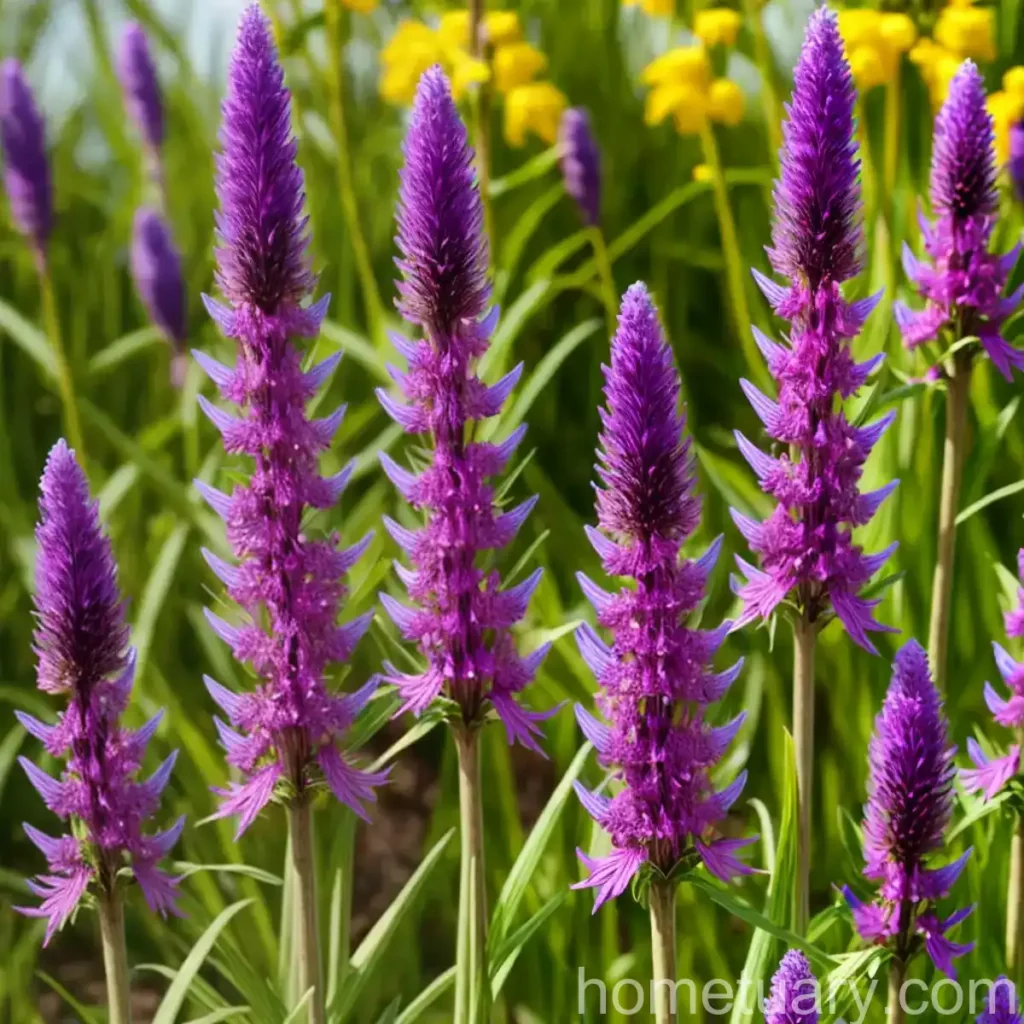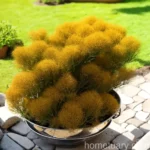All About Blazing Star (Liatris spicata)
What is plant :blazing star (Liatris spicata)
Blazing star, scientifically known as Liatris spicata, is a striking perennial plant that belongs to the Asteraceae family. It is native to North America, where it is commonly found in moist prairies, marshes, and meadows. Also referred to as “gayfeather” or “dense blazing star,” Liatris spicata is renowned for its long, slender spikes of bright purple or white flowers, which bloom from top to bottom, creating a visually stunning display. This plant is celebrated for its ornamental beauty and its invaluable role in supporting pollinators and wildlife.
Key Takeaways – Blazing Star (Liatris spicata)
- Scientific Name: Liatris spicata
- Common Names: Blazing star, Gayfeather, Dense blazing star
- Plant Type: Perennial
- Family: Asteraceae
- Native Habitat: Moist prairies, marshes, meadows
- Flower Colors: Bright purple, white
- Bloom Time: Mid- to late summer
- Hardiness Zones: 3 to 8
- Wildlife Benefits: Attracts pollinators such as bees and butterflies
Now, let’s delve into the details of growing and caring for Liatris spicata, including its cultural requirements, uses, propagation methods, and maintenance tips.
Culture
Uses
Blazing star (Liatris spicata) is highly valued for its ornamental appeal and its role in supporting pollinators. It is often cultivated in gardens and landscapes for its stunning, long-lasting blooms, which add vibrant color and visual interest. Additionally, its nectar-rich flowers attract bees, butterflies, and other beneficial insects, making it a valuable addition to wildlife gardens and pollinator-friendly landscapes.
How to Care for Liatris spicata
Water
Proper watering is crucial for the healthy growth and blooming of Liatris spicata. During the plant’s active growing season in spring and summer, it is essential to provide regular watering to keep the soil consistently moist but not waterlogged. Adequate moisture is especially important during periods of drought or high temperatures. However, it is equally vital to ensure well-draining soil to prevent waterlogging, which can lead to root rot and other issues.
Sunlight
Blazing star thrives in full sun, making it an ideal choice for sunny garden spots and open landscapes. When grown in full sunlight, Liatris spicata produces sturdy, upright stems and abundant, vibrant blooms. It generally requires at least six to eight hours of direct sunlight per day for optimal growth and flowering.
Fertilizer
When it comes to fertilizing Liatris spicata, a balanced, all-purpose fertilizer can be applied in early spring as new growth emerges. Alternatively, organic amendments such as compost or well-rotted manure can be incorporated into the soil in the planting area to provide essential nutrients. While Liatris spicata is not particularly heavy feeders, a light application of fertilizer can help support its healthy growth and blooming.
Soil
Liatris spicata thrives in well-drained, moderately fertile soil. It performs best in soil that is slightly acidic to neutral, with a pH range of 6.0 to 7.5. The soil should be rich in organic matter, which promotes good drainage while retaining sufficient moisture. Amending the soil with organic materials such as compost or peat moss can improve its texture and fertility, creating an ideal growing environment for blazing star.
Pruning
Pruning Liatris spicata is relatively simple and typically involves the removal of spent flowers and stems to promote continuous blooming and maintain the plant’s neat appearance. Deadheading, which entails the removal of faded flowers, prevents the formation of seeds and encourages the plant to divert its energy into producing new blooms. Additionally, cutting back the stems to ground level in late fall or early spring helps rejuvenate the plant and prepares it for the upcoming growing season.
Propagation
Container Popularity
The compact size and striking appearance of Liatris spicata make it well-suited for container cultivation. Its tall, slender flower spikes create an elegant vertical element in container gardens, while its vibrant blooms add lively color and texture. When grown in containers, blazing star can be positioned on patios, balconies, or along garden pathways, where its beauty can be fully appreciated. Furthermore, container cultivation allows for more precise control over growing conditions, making it possible to provide the ideal soil, sunlight, and moisture levels that Liatris spicata requires.
Common Diseases
Liatris spicata is generally resistant to most diseases and pests when provided with the appropriate cultural conditions and care. However, several common diseases can affect the plant, compromising its growth and overall health.
Disease Diagnosis
-
Powdery Mildew: This fungal disease appears as a powdery, white substance on the plant’s leaves and stems, leading to stunted growth and reduced vigor. Adequate air circulation and proper spacing help prevent powdery mildew. Fungicidal treatments may be necessary in severe cases.
-
Root Rot: Overly wet soil or poorly draining conditions can lead to root rot, causing the plant to wilt and decline. Improving soil drainage and avoiding overwatering are essential for preventing this disease.
Common Pests
While Liatris spicata is generally resistant to many pests, certain insects may occasionally pose a threat to its growth and vitality.
Botanist’s Tips
-
To attract beneficial insects such as bees and butterflies, consider interplanting Liatris spicata with other nectar-rich flowers and plants, creating a pollinator-friendly garden space.
-
Mulching around Liatris spicata can help conserve soil moisture, suppress weed growth, and maintain a more stable soil temperature, contributing to the plant’s overall health and vigor.
Fun Facts
-
Blazing star’s vibrant flower spikes make it an eye-catching addition to cut flower arrangements and floral displays, bringing a touch of natural beauty indoors.
-
Liatris spicata has a long history of medicinal use among Native American tribes, who traditionally brewed its roots to create a tea for treating various ailments, including colds and coughs.
In the next section, we’ll explore some additional aspects of Liatris spicata, including its ecological benefits, garden design possibilities, and blooming season.
Links to External Resources
-
University of Florida IFAS Extension – Gayfeather for Pollinators
-
North Carolina State University – Liatris spicata Growing Guide
As we conclude our exploration of blazing star (Liatris spicata), we invite you to share your experiences and insights on cultivating and enjoying this captivating plant. Whether you’re an avid gardener, a landscape enthusiast, or simply appreciate the beauty of nature, Liatris spicata offers a wealth of visual appeal, ecological value, and gardening possibilities. Thank you for joining us on this journey into the world of Liatris spicata, and may your gardens be blessed with the stunning beauty of this remarkable perennial.















